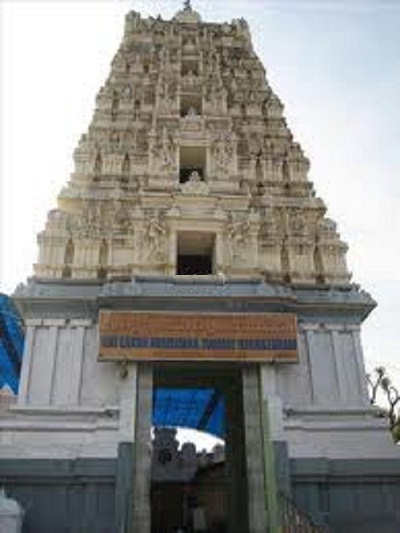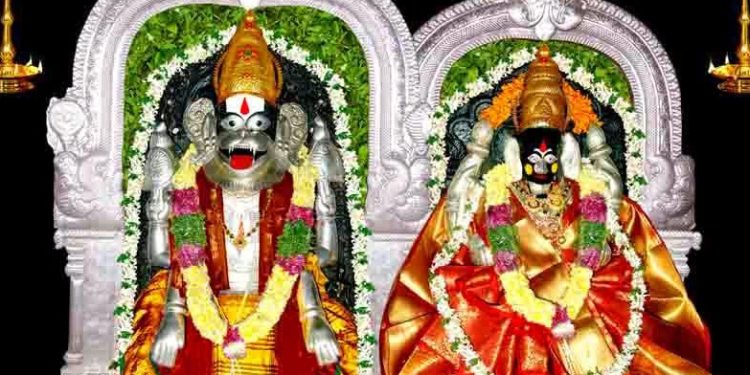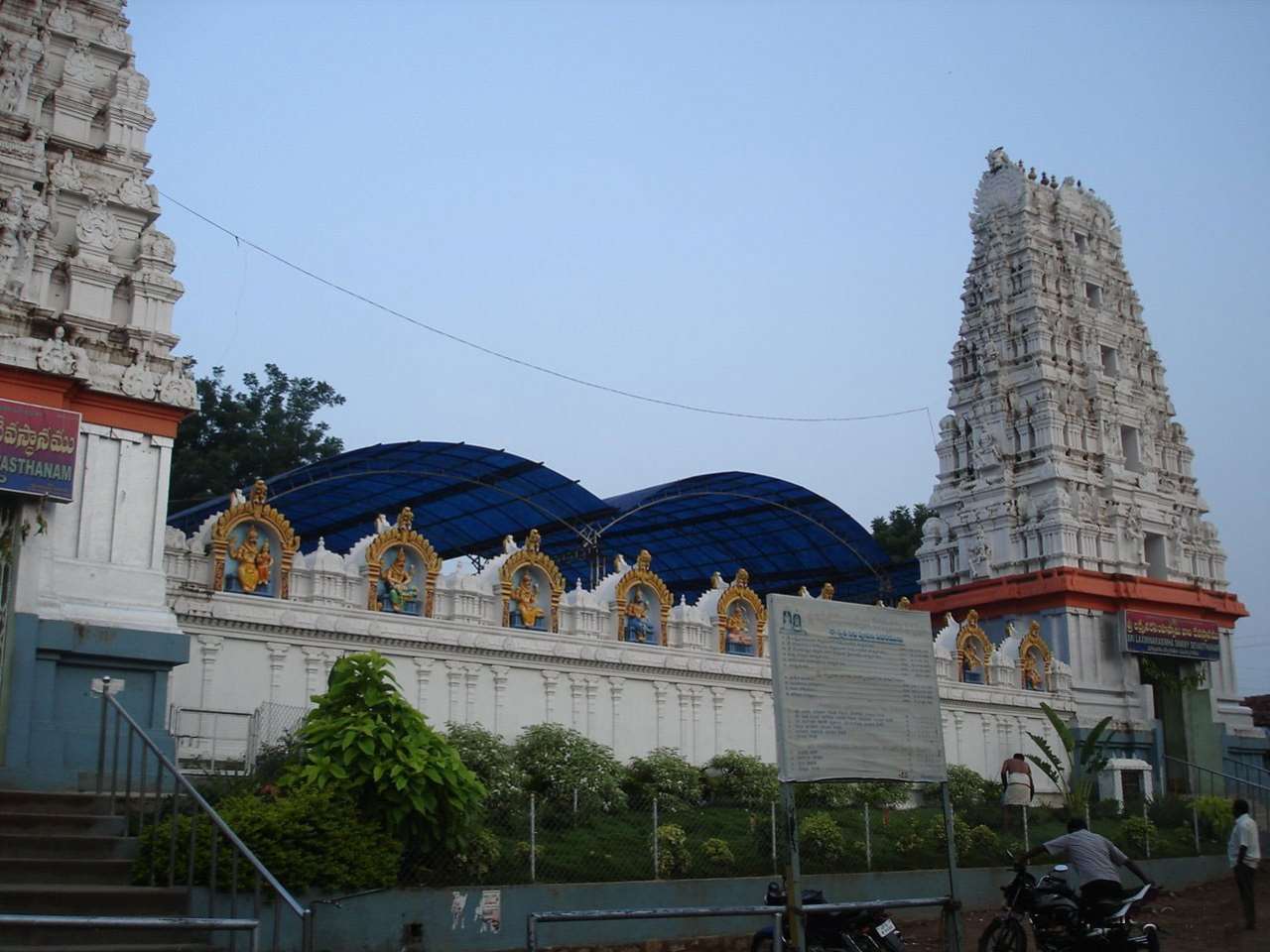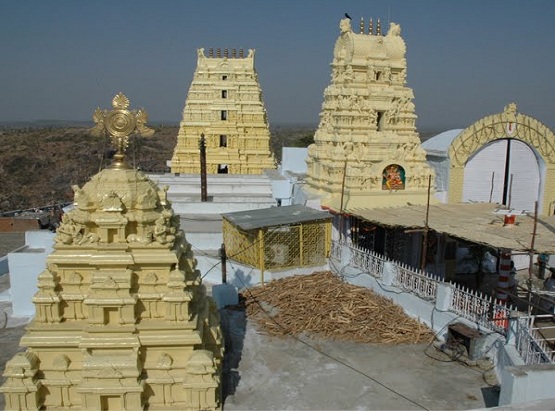Temple is dedicated to the Lord Lakshmi Narasimha Swamy, an incarnation of Lord Vishnu. The temple has two very different idols of the lord Narasimha Swamy. The oldest of these idols is called “pata Narasimha Swamy” which means the older Narasimha Swamy and the temple that was established later is called “kotha Narasimha Swamy” which means the new one.
Shrine’s History
Temple is believed that the temple was built between 928-850 BC. This ancient temple has two versions of temple owing to the devastation it has witnessed over the different period of time. The older one is called as the Pata Narasimha Swamy Temple and the newer one is known as the Kottha Narasimha Swamy Temple. In the 14th and 15th century, the next phase of anti-Hinduism started under Aurangzeb after the fall of Bahamanis and QutubShahis.Rustumdil Khan, the Subedar of Hyderabad converted the temple into a mosque with the help of the then Sultan of Delhi, Aurangzeb. However, in 1448 AD, a new temple near the mosque was reconstructed and hence this temple came to be called as Pata Narasimha Swamy Temple. In 1725 AD, an icon of Lord Narasimha was found in close vicinity of the Dharampuri village and hence, the temple was again rebuilt there.
Architectural Relevance of This Shrine
Pata Narasimha Swamy Temple has two main entrances or Simha Dwarams. Out of the two, Pedda Gopuram is the main entrance of temple complex. There is also an image of Lord Yama at the entrance of the temple to the right. This temple has its own Prakaara or compound in the temple complex. Inside the Prakaara, there is also an idol of Bhakta Anjaneya . Seven more idols of Anjaneya are also framed on the other seven sides of the temple. Inside the Prakaara and before Mukha Mantapam, there is a four pillared pavilion known as the Kalyana Mandapam.Mukha Mantapam consists of 44 stone pillars. The pavilion may be called as Garuda Mandapam dated from the 13th century of the Kakatiyas. The inside roof of the central four pillars facing the Lord is star shaped.The four dark and polished pillars are so exquisite as they bear the figures of the incarnation of Vishnu on the Jangha, nicely carved Ganpati with his vehicle Mushika and various dancing women in different postures.The beautiful sculptures and art on the pillars reflect the highly developed work of the Kakatiyas.The pillars supporting the roof of the sanctum have no resemblance to each other. Inside the Prakaara, there is another Mantapam known as Homa Mantapam which is situated to the south-east of Mukha Mantapam. On the walls of Homa Mantapam, the poems of Narasimha Shatakam were inscribed by Sriman Gudimella Varadachary on 25th July 1974. Kotta Narasimha Swamy Temple, also known as Sri Ugra Narasimha Swamy Temple is situated to the right side of the PataNarasimhaSwamy Temple. This new temple was built by Panatula Narayana Deekshitulu in 1803 AD and the image of Yogananda Lakshmi Narasimha was inscribed in it. Facing the Lord Narasimha at the Dhwaja Stambh, Jambavanta is standing. Garuda, Indra, Agni and Vinayaka are also standing around the temple in different directions. The front portion of the temple is known as Antarala and back one as a sanctum of the Lord. The sanctum and Antarala are equal in size. There is a circulatory passage around the sanctum of Lord in the temple. Near to Antarala, Anjaneya is standing face to face. The front portion of the Mukha Mantapam has 16 stone pillars. The inside roof over the central four pillars is star shaped and a flower is engraved in the centre. The rituals and festivals are similar to the old temple. This place is also famous for the 6 feet tall idol of Lord Brahma with four faces which is very rare.Idols of Lord Krishna and Balarama are also special attractions of the temple.Devotees have strong belief that one who worships Sri Lakshmi Narasimha Swamy will be relieved from mental and physical problems, also get wealthier and lead a healthier life ever.

Shrine’s Map Location and How to Go There
By Road
TSSRTC and APSRTC various private travels operate regular buses that ply to Dharmapuri from all the major cities of Telangana and Andhra Pradesh. The best way to reach the temple in less time is by your own means of transportation like the car or private taxis.
By Rail
The nearest railway station is Mancherial, which is just 40 km away from the temple. It is located on the New Delhi- Chennai route and is well connected to all the major cities of India.
By Air
Hyderabad Airport is the nearest one, 280 km away and is well connected to all the major cities of India and abroad. Other airports close to Dharmapuri are Nagpur Airport and Vijayawada Airport.
Shrine Timings
Temple remains open for public from 5 AM to 2 PM and 4 PM to 8 PM every day. Temple remains closed between 2 PM to 4 PM.
Events Celebrated at This Shrine
The temple organises Brahmotsavam Jatra every year in a grand manner which lasts for 13 days from Phalgun Shudda Ekadashiin the month of March. During the celebrations, the idol of presiding deity is taken out in a procession. During this time, thousands of pilgrims flock to this place.
Extra Information About this Shrine
Best Time To Visit October to March















































